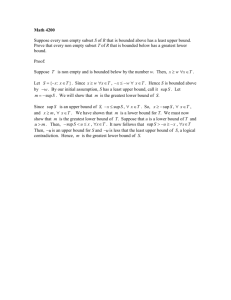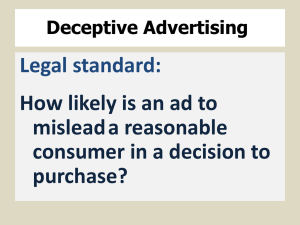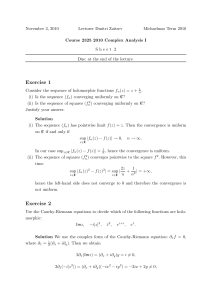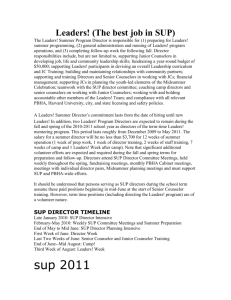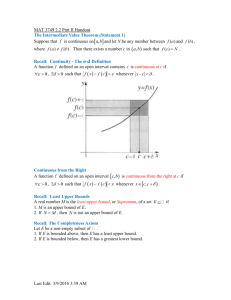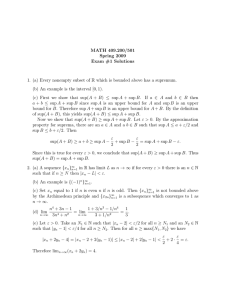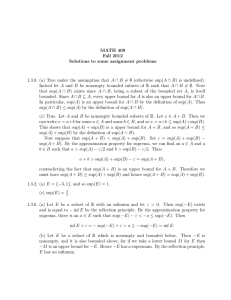MATH 409.501 Fall 2012 Exam #1 Solutions
advertisement
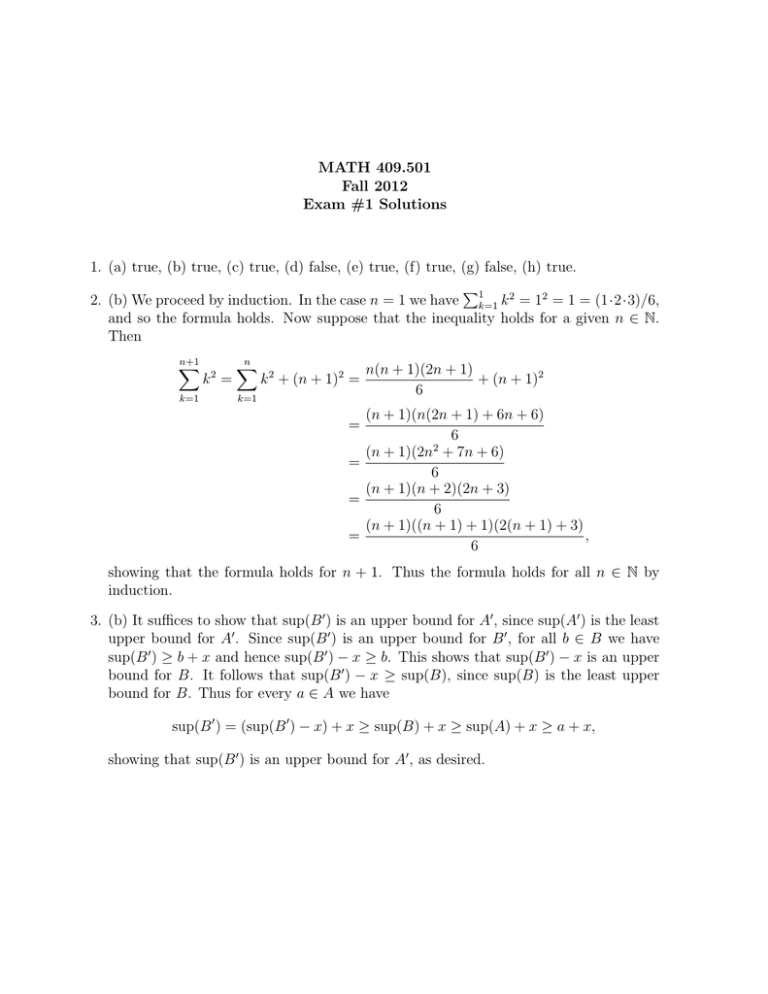
MATH 409.501
Fall 2012
Exam #1 Solutions
1. (a) true, (b) true, (c) true, (d) false, (e) true, (f) true, (g) false, (h) true.
P
2. (b) We proceed by induction. In the case n = 1 we have 1k=1 k 2 = 12 = 1 = (1·2·3)/6,
and so the formula holds. Now suppose that the inequality holds for a given n ∈ N.
Then
n+1
X
k=1
2
k =
n
X
k 2 + (n + 1)2 =
k=1
n(n + 1)(2n + 1)
+ (n + 1)2
6
(n + 1)(n(2n + 1) + 6n + 6)
6
2
(n + 1)(2n + 7n + 6)
=
6
(n + 1)(n + 2)(2n + 3)
=
6
(n + 1)((n + 1) + 1)(2(n + 1) + 3)
=
,
6
=
showing that the formula holds for n + 1. Thus the formula holds for all n ∈ N by
induction.
3. (b) It suffices to show that sup(B 0 ) is an upper bound for A0 , since sup(A0 ) is the least
upper bound for A0 . Since sup(B 0 ) is an upper bound for B 0 , for all b ∈ B we have
sup(B 0 ) ≥ b + x and hence sup(B 0 ) − x ≥ b. This shows that sup(B 0 ) − x is an upper
bound for B. It follows that sup(B 0 ) − x ≥ sup(B), since sup(B) is the least upper
bound for B. Thus for every a ∈ A we have
sup(B 0 ) = (sup(B 0 ) − x) + x ≥ sup(B) + x ≥ sup(A) + x ≥ a + x,
showing that sup(B 0 ) is an upper bound for A0 , as desired.
One can also use the approximation property for suprema as follows to show that
sup(B 0 ) is an upper bound for A0 . Given an element of A0 , it has the form a + x for
some a ∈ A, and
a + x ≤ sup(A) + x ≤ sup(B) + x.
Now given a ε > 0 there is a b ∈ B such that sup(B) < b + ε, in which case a + x <
b + x + ε. Thus a + x ≤ b + x ≤ sup(B 0 ). This shows that sup(B 0 ) is an upper bound
for A0 , as desired.
(c) Set A = {1}, B = {2}, and x = −1, in which case A0 = {−1} and B 0 = {−2}.
Then sup(A) = 1 ≤ 2 = sup(B) while sup(A0 ) = −1 > −2 = sup(B 0 ).


